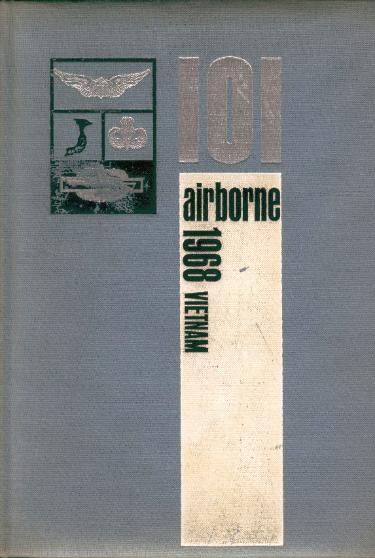
 |
|
|
From this day to the ending of the world, but we in it shall be remembered We few, we happy few, we band of brothers; For he today that sheds his blood with me shall be my brother Shakespeare--- Division Commander - Major General Olinto Mark Barsant |
101ST AIRBORNE DIVISION
| July 1967 - July 1968Those of us who joined the 101st Airborne Division at Ft Campbell are very
proud to have carried on the airborne traditions started in WWII. In Vietnam
the "Screaming Eagle" transformed from an elite unit of paratroopers to a
battle harden unit of airmobile solders. The transformation included several
name
changes. On July 1, 1968, the division was redesignated the 101st Air Cavalry Division a name change that lasted 11 weeks. It finally becoming known as the 101st Airborne Division (Airmobile) and lost its jump status. Those of us from Fort Campbell continued to collect jump pay. |
More about the Campaigns here.
UNIT DECORATIONS
| The 101st Airborne Division 101st Air Cavalry 101st Airborne Division (Airmobile) earn several unit decorations in Vietnam from 1965 - 1972 |
Presidential Unit Citation |
| Valorous Unit Award |
| Meritorious Unit Commendation |
| Republic of Vietnam Cross of Gallantry with Palm |
| Republic of Vietnam Civil Actions Honor Medal |
BRANDER EMAIL TO HIS MEN
| The 101st Airborne Division (Air Assault) has demonstrated the
characteristics of military professionalism since the unit's activation
Aug. 15, 1942. On August 19, 1942, the first commander, Maj. Gen. William C. Lee, promised his new recruits that the 101st has no history, but it has a "Rendezvous with Destiny." As a division, the 101st has never failed that prophecy. During World War II, the 101st Airborne Division led the way on D-Day in the night drop prior to the invasion. When surrounded at Bastogne, Brig. Gen. Anthony McAuliffe answered "NUTS!" and the Screaming Eagles fought on until the siege was lifted. For their valiant efforts and heroic deeds during World War II, the 101st Airborne Division was awarded four campaign streamers and two Presidential Unit Citations. General Order Number Five, which gave birth to the division, reads, "The 101st Airborne Division, activated at Camp Claiborne, Louisiana, has no history, but it has a rendezvous with destiny. Like the early American pioneers whose invincible courage was the foundation stone of this nation, we have broken with the past and its traditions in order to establish our claim to the future. "Due to the nature of our armament, and the tactics in which we shall perfect ourselves, we shall be called upon to carry out operations of far-reaching military importance and we shall habitually go into action when the need is immediate and extreme. "Let me call you attention to the fact that our badge is the great American eagle. This is a fitting emblem for a division that will crush its enemies by falling upon them like a thunderbolt from the skies. "The history we shall make, the record of high achievement we hope to write in the annals of the American Army and the American people, depends wholly and completely on the men of this division. Each individual, each officer and each enlisted man, must therefore regard himself as a necessary part of a complex and powerful instrument for the overcoming of the enemies of the nation. Each, in his own job, must realize that he is not only a means, but an indispensable means for obtaining the goal of victory it is, therefore, not too much to say that the future itself, in whose molding we expect to have our share, is in the hands of the soldiers of the 101st Airborne Division." The 101st Airborne Division was reactivated as a training unit at Camp Breckinridge, Ky, again in 1950. It was reactivated again in 1954 at Fort Jackson, S.C., and in March 1956, the 101st was transferred, less personnel and equipment to Fort Campbell, Ky, to be reorganized as a combat division. |
1968 YEARBOOK
 |
Some of the soldiers had the opportunity to purchase this yearbook before leaving South Vietnam. Most of us never knew it existed. |
|
Webmaster - Barth "Shortround" Cunico |